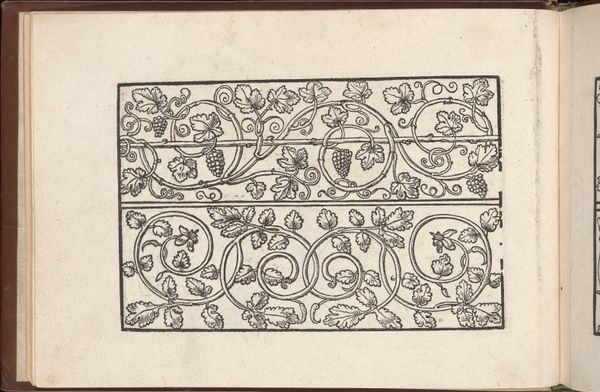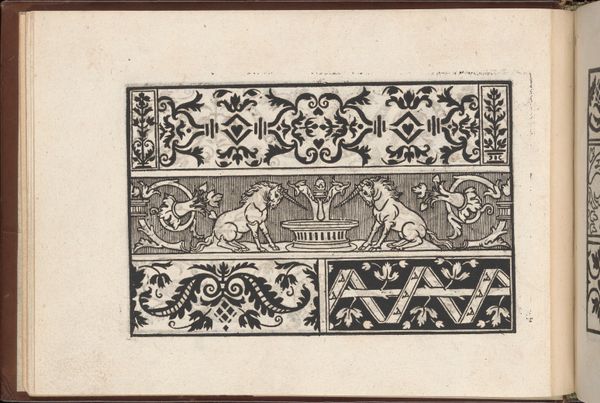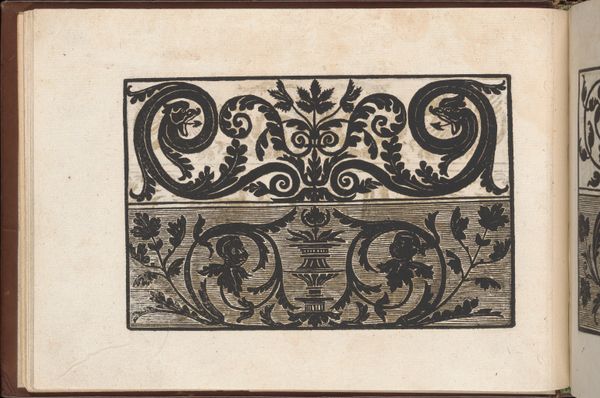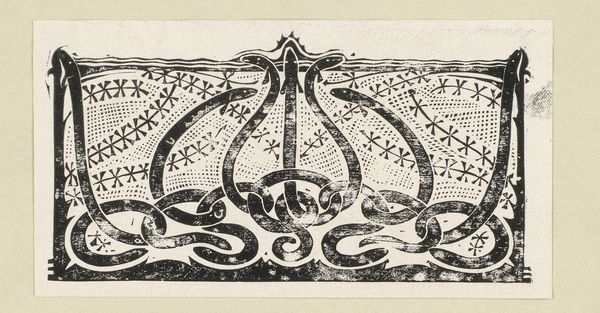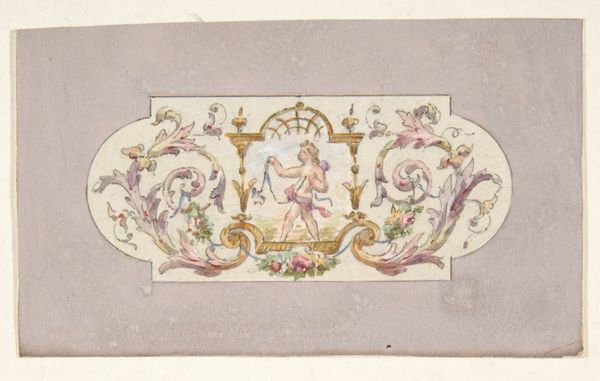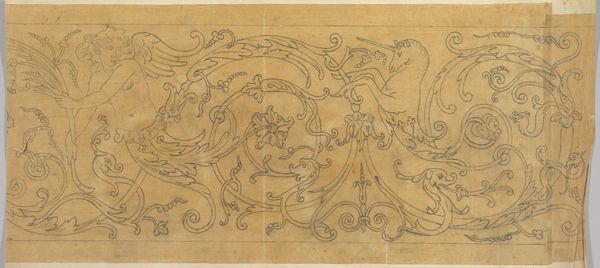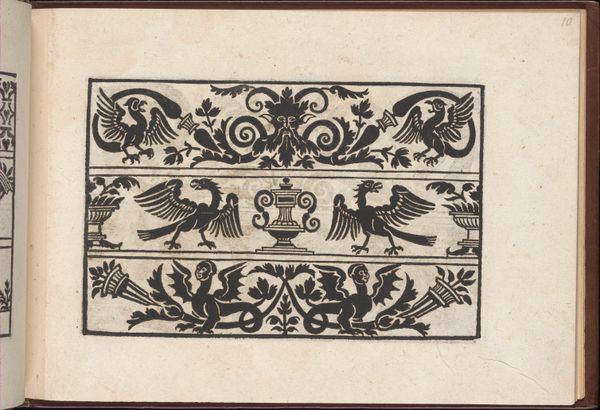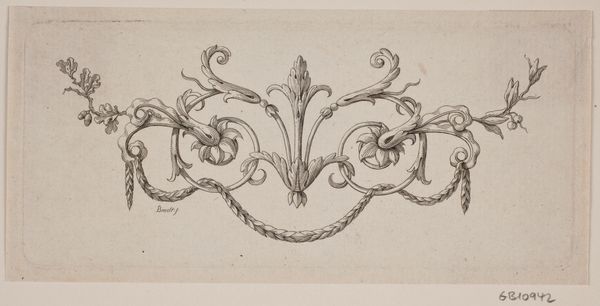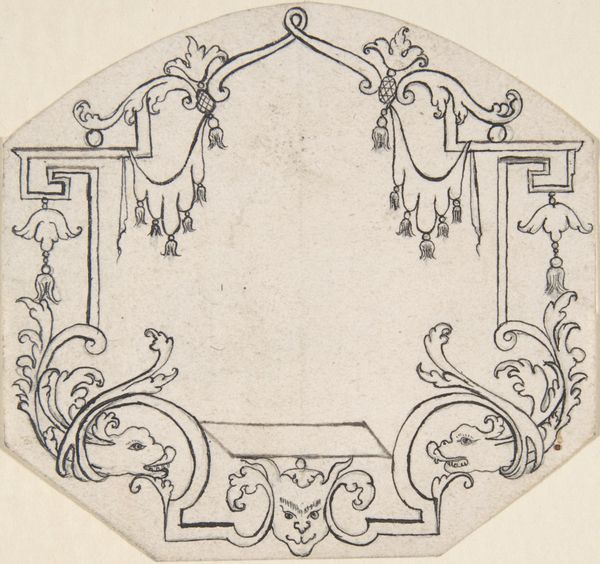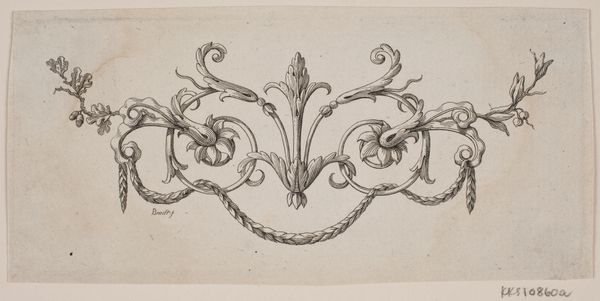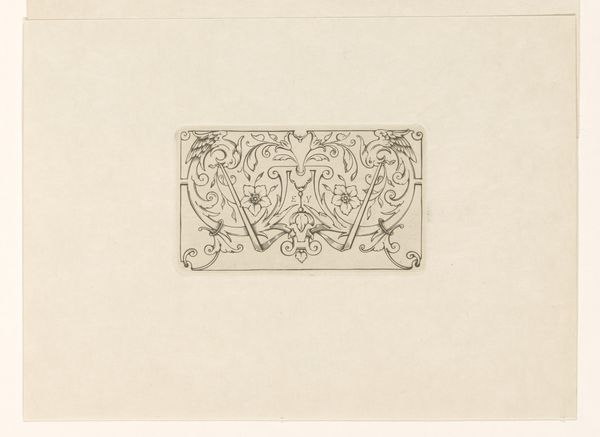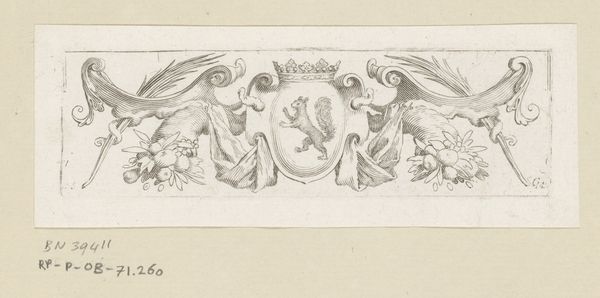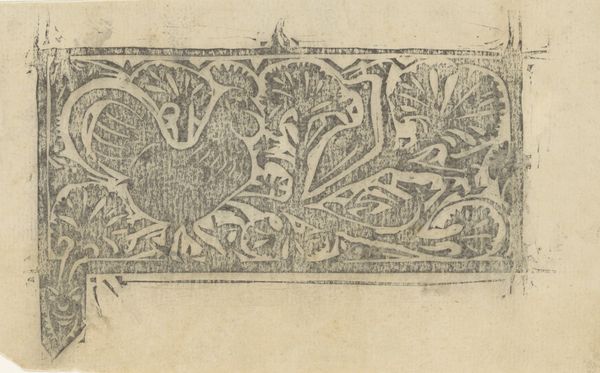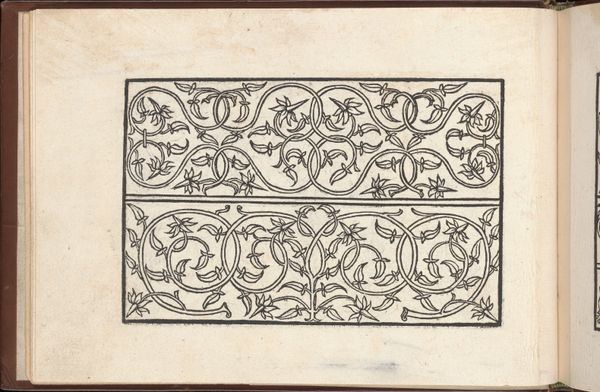
drawing, print, engraving
#
drawing
# print
#
figuration
#
line
#
academic-art
#
decorative-art
#
engraving
Dimensions: 114 mm (height) x 178 mm (width) (bladmaal)
Curator: Here we have Lorenz Frølich's "Artist's Door Sign," an engraving from 1878 currently housed at the SMK, the National Gallery of Denmark. Editor: Oh, how precious! It’s delicate and whimsical. The kind of thing that makes you want to tiptoe inside, imagining the creative chaos—or maybe blissful serenity—within. Curator: Absolutely. It's a piece brimming with historical context. The emphasis on craftsmanship, the stylized lettering – it's all indicative of the academic art of the time, drawing from the decorative art movements but filtered through Frølich's unique lens. We have to understand that during this period, the role of the artist was undergoing significant re-evaluation in society. Editor: True, and those plump little cherubs lounging along the bottom! Are they whispering secrets, perhaps debating the merits of Frølich’s artistic choices? I can almost hear them bickering over the right shade of ochre. They bring this sense of levity that totally undercuts any perceived pretension. It's endearing. Curator: Indeed. Their presence also raises interesting questions regarding the representation of childhood innocence in art of this period, and its ideological underpinnings in bourgeois conceptions of family and virtue. Moreover, the sign as a declaration is making explicit who is the owner. Editor: Totally. And look at those intricate vines snaking up the sides! There’s almost a sense of nature reclaiming the formal, structured space of the inscription. Is that wishful thinking? Curator: It's a beautiful observation. Considering the growing anxieties around industrialization in the late 19th century, this visual tension perhaps mirrors a broader societal yearning for the organic within an increasingly manufactured world. But also remember it is made by using modern industrial approaches. Editor: The duality, yes. I love it! I keep finding more charming details the longer I look, a lovely window into the past, filtered through a bit of light-hearted artistry. Curator: I agree, and approaching Frølich's print with an eye to the complex negotiations of self-representation and social commentary that artists navigate offers a new lens on a piece that might initially appear simply ornamental.
Comments
No comments
Be the first to comment and join the conversation on the ultimate creative platform.
